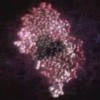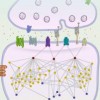
Getting an edge on breast cancer
Feb 3rd
Cancer is a life threatening disease characterized by uncontrolled growth of cells coupled with malignant behavior. The causes leading to cancer are believed to be genetic, environmental, or a combination of the two. Chemotherapy is one of a number of treatments for cancer. It utilizes a regiment of chemicals toimpair cell division and/or induce programmed cell death.
Research carried out by Dr Yang Li and colleagues at Harvard Medical School, the Technical University of Denmark, and the Université Libre de Bruxelles, have highlighted two genes – LAPTM4B and YWHAZ – that may inhibit the response of anthracycline-based adjuvant chemotherapy for breast More >

Cell Phones: Where’s my earpiece?
Jan 29th
Cell phone usage has increased dramatically in recent years, with the number of subscribers exceeding 3 billion subscribers worldwide. Numerous case-control studies have examined the possible correlation between long term use of cell phones (specifically, the electromagnetic radiation emitted by cell phones) and the incidence of brain tumors.
In the fall of 2009, the World Health Organization published a 10 year study which examined the cell phone habits of more than 120,000 people in 13 countries. The study reported a significantly higher risk of developing brain tumors in individuals with 10 years or more of cell phone usage. Similar findings in More >

Could Jurassic Park have been right?: Venomous Dinos
Jan 28th
65 million years ago one of the most amazing and dynamic groups of organisms vanished from our planet, the Dinosaurs. All that remains are fossil records with gaping holes and missing data.
Only recently has science began to unveil some of the mysteries of these behemoths. For decades it was believed that ancient DNA, proteins, and soft tissue could not be preserved over millions of years. Now, during the last 2 years, soft tissue was discovered deep inside the thigh bones of T-Rex.
There are times that inspiration for truth comes from science fiction, such as the best selling novel and blockbuster More >

Childhood Indications of Schizophrenia
Jan 25th
A recent 30 Year longitudinal study of individuals from New Zealand has revealed early indications of schizophrenia development later in life. Unlike many mental disorders, schizophrenia usually strikes much later in life (usually in mid to late adolescence) and so parents and patients alike may be unaware that there is a potential problem. In many places adequate access to proper mental-healthcare is lacking, so even when a diagnosis is possible, treatment may not be.
Obviously, the earlier individuals have access to information about their health, the longer they have to make appropriate choices. When it comes to mental-health, a properly responsive More >

Unfortunate Words
Jan 21st
Senate Majority Leader Harry Reid is under fire for language used in comments he made about President Obama’s potential electability. Although described as “unfortunate” by Obama, Reid’s use of “Negro” and “light-skinned” offended many.
The Eugenics Archive includes several examples of how African Americans endured dehumanizing scrutiny, categorization, and labeling at the hands of eugenicists and other Americans. Eugenicists believed that race mixing (miscegenation) produced “mongrels” and would lead to the decline of the “higher” white race; some strived to identify and register the race of all individuals to prevent it. “The New Virginia Law to Preserve Racial Integrity” was enacted in More >

Gene Theft and Green People?
Jan 21st
I have been asked several times by middle school students if it would be possible to give humans the genes to carry out photosynthesis. It’s been theorized by a few of these students that this would solve some major nutrition problems in places currently plagued with drought. I always smile and agree that is sounds like a great idea, but probably not possible. Now, there is actually some evidence to the contrary.
A sea slug species, Elysia chlorotica, found in the marshes of New England and Canada has a unique trait. It produces chlorophyll and can use photosynthesis to make it’s own food – just like a More >

Mixed-up Nomenclature?
Jan 20th
An article in the December 24, 2009 issue of Molecular Cell, “A Reconfigured Pattern of MLL Occupancy within Mitotic Chromatin Promotes Rapid Transcriptional Reactivation Following Mitotic Exit,” had me thinking how misleading genes and proteins are often named. The publication details the function of a protein, Mixed Leukemia Lineage (MLL), which attaches to DNA prior to cell division. MLL “bookmarks” genes that need to be expressed immediately after the cell divides. The protein’s function is not, however, to cause leukemia. Its name – Mixed Lineage Leukemia – rather reflects the story of its discovery as it was found during research into More >

New Technique may Unravel Secrets of Biochemistry
Jan 11th
A new paper from David Kleinfeld’s Laboratory at UC San Diego details an exciting new technique for studying biochemistry in the brain. The paper, published in the journal Nature Neuroscience, outlines a novel method for studying cell-to-cell signals that are the basis of neurotransmission. It has significant potential for uncovering the mechanisms by which many psychiatric drugs work.
What did the group find? Kleinfeld’s group devised a technique that uses elaborately-named “cell-based neurotransmitter fluorescent engineered reporters” (CNiFERs for short) to examine how neurotransmitter receptors are activated. CNiFERs are cells that have been engineered to change color when acted upon by a specific neurotransmitter. More >

Cancer-free mole rats may hold a key to fighting cancer.
Jan 11th
I was always under the impression that sharks never got cancer. It turns out that isn’t true – they do get cancer, but less often than people. There is an animal that doesn’t get cancer though, and that is the naked mole rat. These cute little creatures live long lives underground, so I’m not sure how anyone figured this out.
Needless to say, an animal that doesn’t get cancer is something worth studying. Why no cancer? It turns out that mole rat cells don’t “like” each other very much. Researchers discovered that when these cells are cultured, they stop dividing at More >

